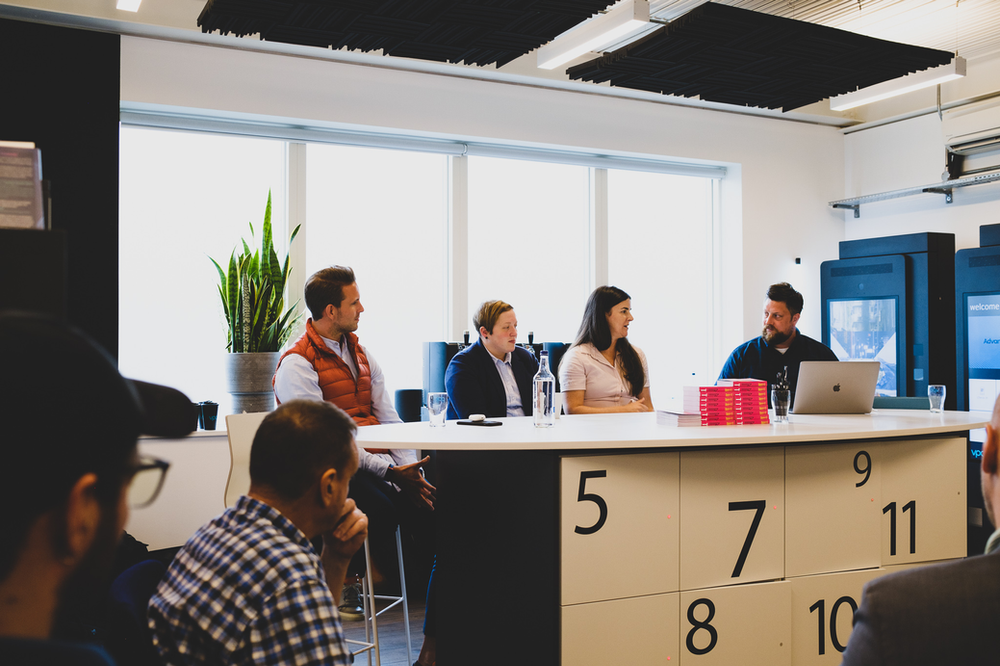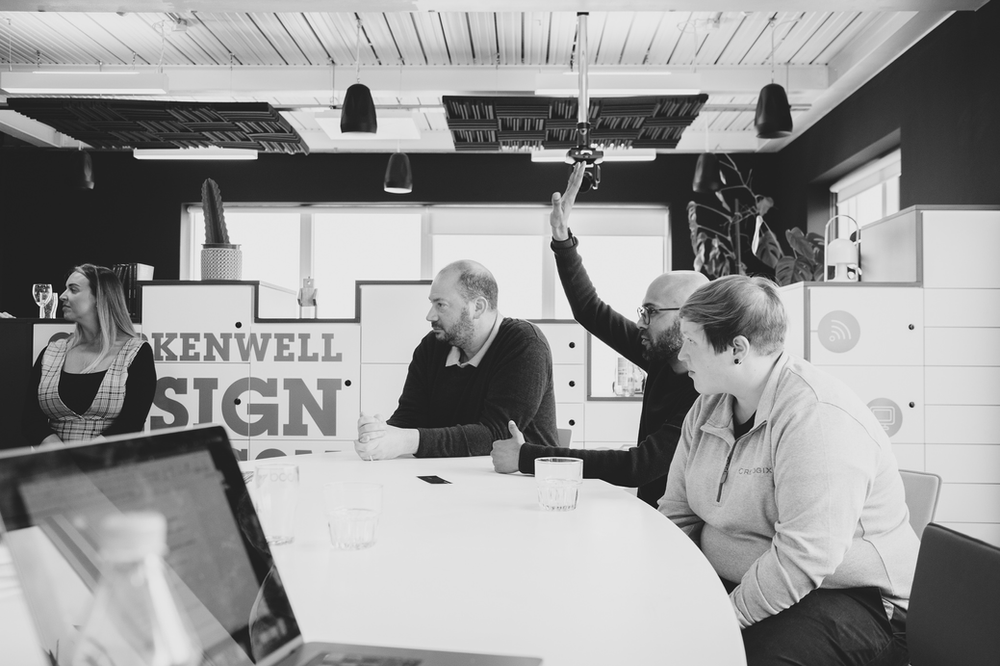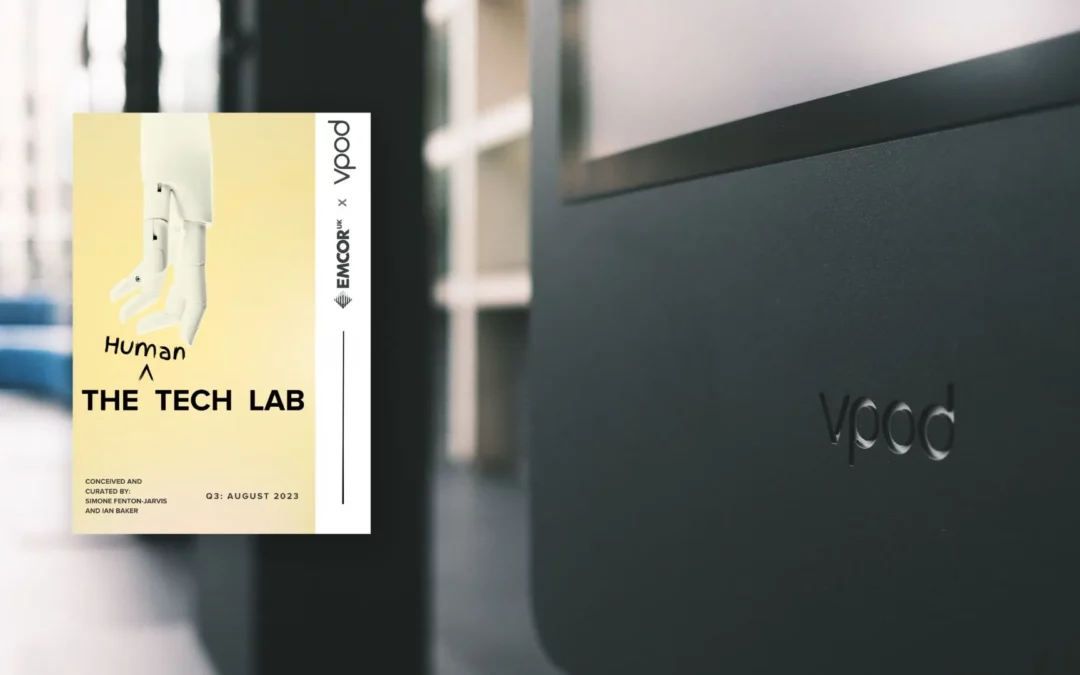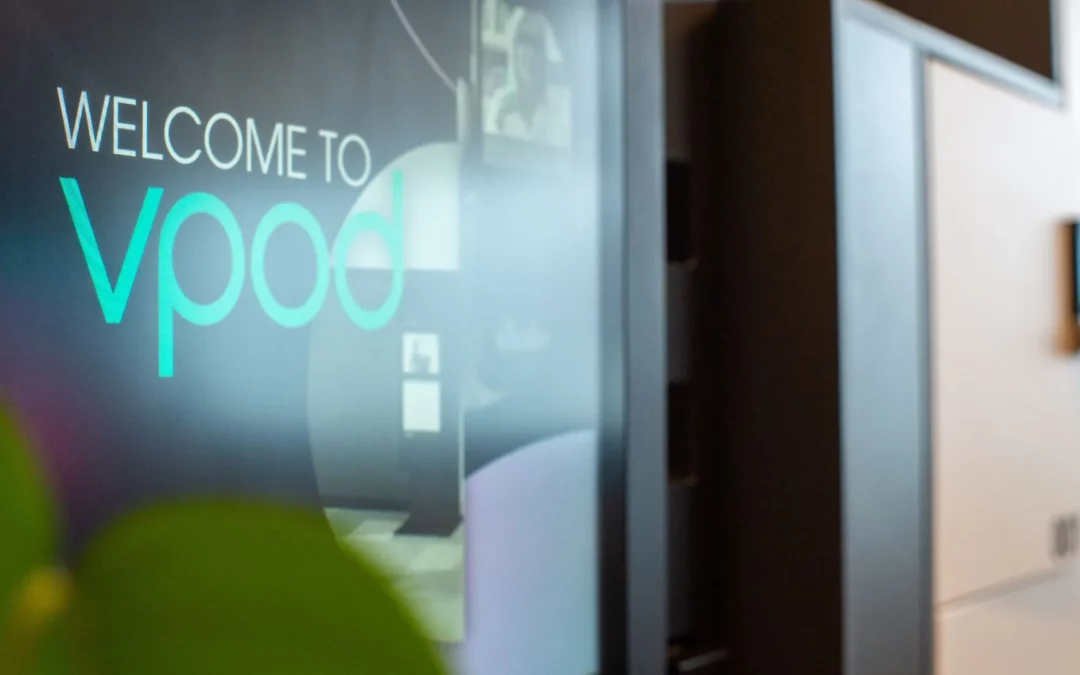At the end of May 2022, Vpod launched a new showroom for Clerkenwell Design Week, the UK’s leading independent design festival. As industry leaders in workplace experience, we invited several thought leaders to join us for insightful discussions about the future way of working and its impact on office design, facilities, and technology. Specialising in modern workplace experiences, we took the conversations further by discussing another important aspect of the future of work: The People.

In today’s blog, we will summarise the discussions and explore what it means to have a human-centric workplace, how employees are reacting to change, and how organisations can know if flexible methods of working actually work.
Our industry guest speakers included:
- Simone Fenton-Jarvis – Author of ‘The Human-Centric Workplace’, Director of Customer Workplace Solutions at Relogix
- Sam Farrant – Former MD at Vpod Smart Solutions
- Simon Cohen – VP Partners at Condeco
- Ali Khan – COO at Shape
- Tara Hack – Principal Design at Woodalls Design
- Freddie Pritchard-Smith – Co-Founder at Trustek
3 Key Challenges and Trends in the Future of Work
1. Feeling ‘human’ at work
The ‘Great Resignation’ has seen millions of employees voluntarily leave companies for various reasons such as prioritising professional development, improving physical, mental, emotional, and financial health, as well as what they want their overall employee experience to look like.
With rising costs of living and the aftermath of the pandemic, modern flexibility at work means having a better work-life balance that aligns with personal preferences and goals. FM expert, Simone Fention-Jarvis, mentioned the “6 C’s” that are essential for people to return to the office:
- Collaboration
- Connection
- Curiosity
- Communication
- Culture, and
- Concentration
The ability to not only feel a sense of fulfillment at work, but also adapt to personal commitments and responsibilities – whether it be childcare, family illness, or personal challenges – has become a leading motivator for today’s workforce, and employees are drawn to employers who promote and enforce a human-centric workplace.
“To be human is to experience life in all its colours and potential, the awe of being alive and the thrill of discovering what it means to be us, the greatest wonder in the world.”
Future workplaces need to meet employees’ needs and treat them each as a whole person – allow them to connect, create cultures, and find belonging and purpose.
Although there are a few ways to ensure workplaces are future-ready, introducing work methods such as hybrid working offers a more flexible solution to maintain work efficiency and retain talent without compromising their personal lifestyle needs.
“Being able to choose where to work and how to work is better for us as people, for our wellbeing and for being flexible.”- Simone Fenton-Jarvis, Director of Customer Workplace Solutions at Relogix.
2. Building a trustworthy company culture
In addition to the rise in demand for change around flexibility, company culture has also become a bigger priority, although challenging to many. Employees assist in driving a business forwards, and employers who do not understand their workplace needs or meet employee expectations can expect pushback that might lead to higher turnover rates.
As a result of these flexible expectations, thought leaders have voiced their conclusion that people need more human-centric employee experiences and support from leadership in the workplace. During the panel discussion, the question of whether there is trust in leadership to deliver a more human-centric workplace was often raised, and for good reason. Culture is derived from the top-down, and employees react to the changes and actions, or the lack thereof, that leaders implement.
A human-centric workplace is not only about a new approach, but also about challenging and letting go of unnecessary processes, complexity, levels of decision-making, and hierarchy.
“Employees are in charge. There has been a complete shift.”- Ali Khan, COO at Shape.

3. Designing a space that accommodates different needs
The panel also discussed the importance of designing versatile and comfortable workplaces that accommodate different needs. People form emotional attachments to a space where they can thrive and connect.
A collaborative office space empowers individuals by giving them choices for where, when, and how they work. It prioritises creating spaces for them to brainstorm and be re-energised by moments of solitude. Hence, in the Future of Work, the physical space remains crucial to driving and determining behaviours and plays a significant role in shaping the overall experience.
“They [employees] forgot what offices provide. It requires strong management to bring culture together virtually, so the space has been passed with the responsibility to provide the backdrop to these conversations – to bring the employees back.” – Tara Hack, Principal Design at Woodalls Design
Using technology to understand Workplace efficiency
Creating a culture that is sustainable is one of the workplace obstacles many organisations face, but creating a collaborative office space with a human-centric mindset, and being able to prove that the flexible work method is just as productive, is another factor to consider. This is where technology and data can contribute to assisting in streamlining processes.
One thought leader brought up the realisation that, although many companies had no idea what to expect in terms of organisational change post-pandemic, many people in leadership were expecting things to sort themselves out – which has been a humbling factor to large organisations, considering the number of employees leaving voluntarily. Not communicating with employees or considering their direct needs encourages a disconnect in the workplace, when staying connected and engaged should be the main goal.
A workplace supporting a human-centric design can be created through multi-purpose furnishing, efficient use of space, and technology that automates manual tasks. Specialising in virtual receptions and smart lockers, Vpod designs smart solutions and takes a consultative approach to make workplaces easier to use, all while enhancing the end-to-end experience in physical space.
Understanding the usage of space as people work flexibly will help organisations keep track of employee office habits, and where costs and procedural complexities can be cut to save money and time. This will help ensure ongoing productivity and engagement whilst making the most out of the physical workspace, for the best human-centric work experience.
Conclusion
In conclusion, workplace experts claim that the future of work is human-centric, to allow for:
- Better flexibility for work-life balance
- Improved company culture, particularly from the top-down
- Increased employee engagement and productivity, through understanding needs and expectations and implementing effective actions and changes
Company leaders need to acknowledge that their people are additional sources of power for the business, and they need to challenge themselves by letting go of unnecessary processes and complexities to build a workplace ecosystem – with technology that supplements their workflows and flexible policies that allow them to combine controlling their work and personal life, these solutions will only continue to help nurture their overall wellbeing and workplace experience.


